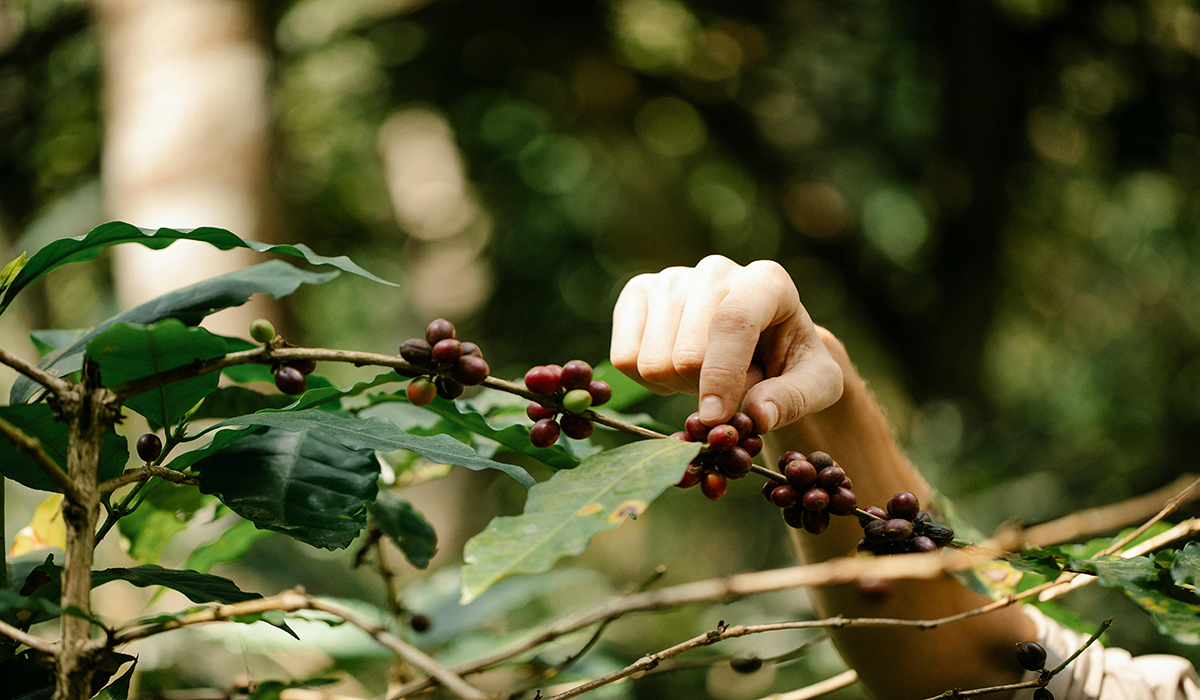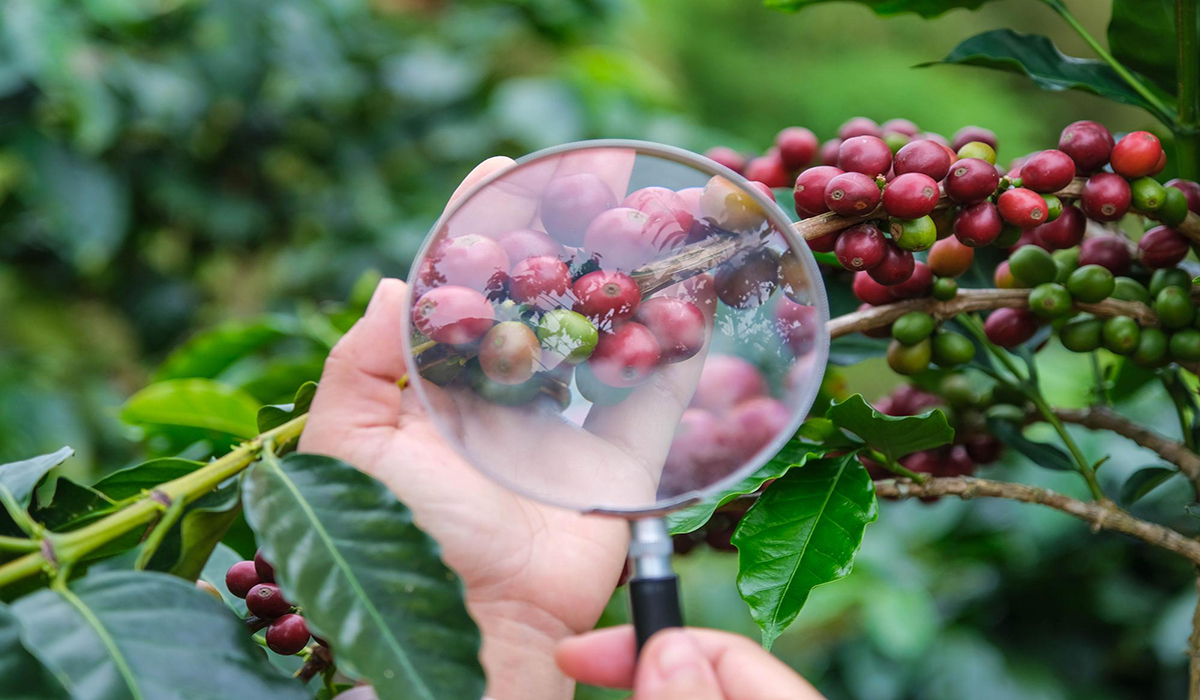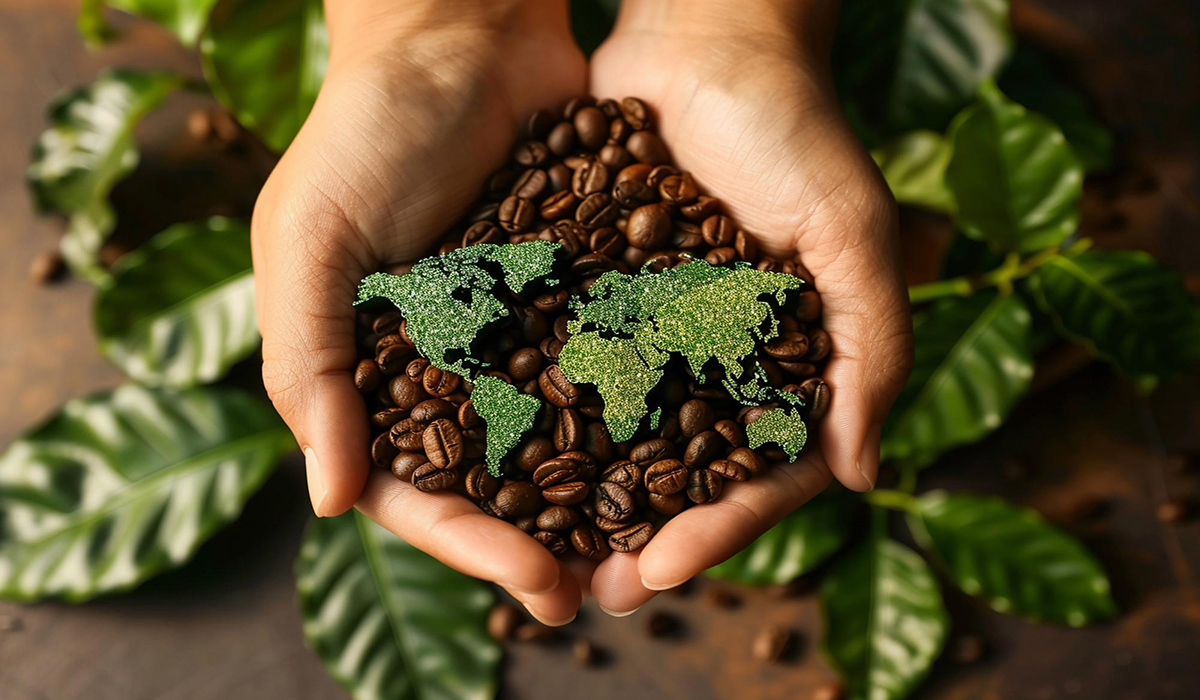The Impact of Climate Change on the Coffee Industry

Coffee is the second-largest industry in the world after oil, and in recent years, climate change has had a profound impact on this industry. Parto Padideh Company, as one of the pioneers of the coffee industry in Iran, constantly monitors global trends in this field, and according to studies, climate change has created serious challenges for the future of this industry. By focusing on the cultivation and distribution of Specialty Coffee Beans in Iran, the company aims to align with global quality standards while navigating environmental challenges.
Over time, the coffee industry has faced numerous challenges, the most important of which is the impact of climate change on coffee cultivation. Rising temperatures, drought, changes in rainfall patterns, and the spread of pests have put coffee farmers around the world in complex conditions. However, in response, innovative solutions and sustainable approaches in coffee farming have emerged that make the future of this industry more promising.
Coffee Cultivation Steps
- Land and Soil Preparation
Includes plowing, soil amendment (if needed), pH testing, and adding organic or natural fertilizers to enrich the growing bed. - Selection of Suitable Coffee Variety and Seeds
Based on the region’s climate conditions, a variety such as Arabica, Robusta, or resistant hybrids is selected. These selections are particularly important for producing Arabica & Robusta coffee for expo, where quality, resilience, and flavor consistency are key factors. - Seedling Production in Nursery
Seeds are planted in a nursery or greenhouse to grow healthy and strong seedlings (usually takes between 6 to 12 weeks). - Transplanting Seedlings to Main Field
Seedlings are transplanted to the main field during the appropriate season and planted with regular spacing (often accompanied by natural shade such as banana or native trees). - Plant Care and Maintenance
Includes regular irrigation, pest and disease control, fertilization, pruning, and weeding.
- Flowering and Coffee Cherry Formation
After about 2 to 3 years (under favorable conditions), the coffee plant begins to flower and then produces fruits called “cherries” or “coffee cherries.”
- Coffee Cherry Harvesting
Coffee fruits are usually harvested manually when the cherries are fully ripe and have turned red.
- Primary Processing (Wet or Dry)
To separate the bean from the fruit, different processing methods are used such as washed (wet), natural (dry), or semi-washed processing.
- Drying the Beans
After separation, the beans are dried either under the sun or using dryers until their moisture content reaches about 10 to 12%.
- Storage and Transport to Processing Center or Market
The dried beans, in their parchment form, are stored and then transported to secondary processing centers or for export.
Coffee Cultivation Conditions and Sensitivity to Climate Change
Coffee is a plant that requires specific climatic conditions and grows in tropical regions on either side of the equator. It needs a temperature range between 16 to 25°C and cannot tolerate cold. This temperature limitation has made it possible to cultivate coffee in Iran only in greenhouses.
The two main species of coffee, Robusta and Arabica, have different altitude requirements. Robusta grows best at altitudes of 600 to 1,000 meters, while Arabica thrives at 1,000 to 2,400 meters. Environmental factors such as soil type, rainfall levels, and soil nutrients all influence the final taste of coffee.
For example, in the Blue Mountains of Jamaica at 2,000 meters elevation, due to the purity of the oxygen and specific climatic conditions, some of the world’s finest coffees are produced—often priced over €60 per kilogram. Likewise, with increasing recognition, Iran is positioning itself as a Premium coffee beans supplier in Iran, especially in markets that value traceability and unique flavor profiles influenced by local microclimates. Similarly, in regions like India and Chabahar, the monsoon phenomenon affects the drying process and flavor quality, resulting in uniquely flavored coffees.
Climate-Resistant Coffee Varieties
One of the major advances in sustainable coffee agriculture has been the introduction and development of climate-resistant coffee varieties. Varieties such as Stenophylla and Excelsa are considered suitable alternatives to the sensitive Arabica due to their high heat tolerance and resistance to certain pests and diseases. This approach not only ensures crop resilience but also offers desirable flavor profiles.
Regenerative Coffee Farming: Reviving Soil and Biodiversity
One of the major trends in recent years is the move toward regenerative coffee farming. This method focuses on improving soil health, using natural fertilizers, practicing polyculture, and preserving local ecosystems to counteract environmental degradation. Regenerative agriculture not only helps preserve farmlands but also ensures long-term productivity and economic sustainability of coffee farms.
The Impact of Climate Change on Coffee Production and Prices
Global warming and the increase in greenhouse gases in recent years have led to significant fluctuations in coffee prices. For example, the price of Vietnamese coffee has surged from approximately $2.80 to over $5 per kilogram. This price hike is directly linked to reduced production caused by drought and shifting rainfall patterns.
According to Iran’s customs statistics, over 33 million kilograms of green coffee beans, worth around $155 million, were imported into the country during the first seven months of 2024 — reflecting a sharp increase in global coffee prices.
Natural disasters and climate variability can have unpredictable impacts on coffee production.
For instance, volcanic activity in Guatemala temporarily halted coffee production. Interestingly, this very event gave rise to a unique coffee variety known as “Volcano,” which developed a distinctive alkaline flavor due to volcanic soil enrichment. This example shows that while climate change poses challenges, it can also create new opportunities.
Impact on Coffee Quality and Processing
Climate change affects all stages of coffee production and processing. Various processing methods — such as washed, semi-washed, dry process, honey process, and anaerobic fermentation — all depend on stable environmental conditions. Shifts in temperature and humidity can adversely affect the quality of these processes.
For example, in the dry process, where coffee cherries must be sun-dried, climate variability can lead to improper drying and ultimately lower-quality beans. Even in the roasting phase, the quality of coffee beans — which is influenced by growing conditions — plays a crucial role in the final outcome.
Coffee from different regions exhibits varying levels of density, and these physical characteristics can be influenced by climate change. For optimal roasting results, the bean moisture content should remain between 8% to 12%, a threshold that can be disrupted by environmental changes.
Regional Shifts and the Emergence of New Coffee-Growing Areas
As climate conditions evolve, some traditional coffee-growing regions are losing their suitability, while new areas are becoming viable for coffee cultivation. For example, in southwestern China’s Yunnan Province — bordering Myanmar, Burma, Laos, and Vietnam — Arabica coffee production is expanding rapidly.
This region, once renowned for producing Pu’er tea, is now emerging as a key coffee-growing area. Climate change has also altered planting and harvesting patterns. Some regions that used to yield two harvests per year now produce only one due to seasonal shifts. These changes affect not only production volumes but also supply chains and local economies.
Altitudinal Migration of Coffee Farms
In an effort to preserve quality and ensure sustainable production, some coffee producers have begun relocating their farms to higher altitudes — areas that offer cooler temperatures and improved humidity for coffee cultivation. While this upward migration serves as a short-term solution, it requires careful planning, substantial investment, and the training of local labor.
Social and Economic Impacts
The effects of climate change on the coffee industry extend far beyond agriculture. Smallholder farmers, whose livelihoods depend on coffee cultivation, are facing serious challenges. Rising production costs and declining yields have significantly impacted their incomes.
Conversely, emerging coffee-growing regions have created new job opportunities and local economic development. However, global coffee demand continues to rise. For instance, per capita coffee consumption in Scandinavian countries exceeds 11 kilograms annually, and the United States remains the world’s largest importer of green coffee beans.
This steady demand is driving the coffee industry to seek innovative solutions to the challenges posed by climate change.
The Role of Technology in Enhancing Coffee Cultivation Efficiency
Alongside traditional farming methods, modern technologies are playing a key role in climate adaptation strategies for coffee agriculture. Tools such as smart soil moisture sensors, precision drip irrigation systems, local weather stations, and data analytics powered by artificial intelligence allow farmers to make more informed and timely decisions.
These innovations help optimize resource use, reduce waste, and increase overall productivity — essential elements for building climate-resilient coffee systems.
Future Solutions and Adaptation Strategies
The coffee industry is actively developing strategies to adapt to climate change. These include breeding drought- and heat-resistant coffee varieties, improving irrigation systems, and implementing new technologies in processing methods. Additionally, many producers are exploring regenerative and sustainable agricultural practices that minimize environmental impact.
Looking ahead, we are likely to witness significant shifts in global coffee production and consumption patterns. Successfully adapting to these changes will require international collaboration, investments in research and development, and support for small-scale farmers. Leading companies in the coffee sector, such as Parto Padideh, are expected to play a crucial role in driving innovation and ensuring the long-term sustainability of the industry.
Conclusion
In 2025, coffee cultivation is no longer a purely agricultural activity — it is a complex, multidimensional process that demands innovation, global cooperation, and sustainable practices. From climate-resilient coffee varieties to smart agricultural tools and regenerative soil techniques, every effort is aimed at securing a brighter future for tomorrow’s cup of coffee.
Frequently Asked Questions (FAQ)
What is sustainable coffee farming?
It is a method that supports environmental protection, soil health, and reduced resource consumption.
Which coffee varieties are better suited for climate change?
Stenophylla, Excelsa, and some newer hybrids that are heat- and pest-resistant.
How does technology help coffee farmers?
By using smart sensors, data analysis, and precise irrigation, technology boosts efficiency and productivity.
Can coffee be grown anywhere?
No. Coffee requires specific altitude, temperature, and rainfall conditions to grow properly.
How does climate change affect coffee production?
It leads to reduced yields, increased pest outbreaks, and shifting rainfall patterns.




